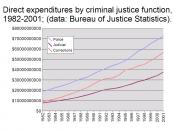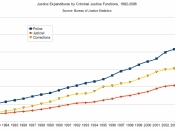Criminology is a field that has been researched prolong. Most of the information explaining crime and delinquency is based on facts about crime (Vold, Bernard, & Daly 2002, p.1). The aim of this paper is to describe the theories of crime and punishment according to the positivists Emile Durkheim and Cesare Lombroso, and the classical criminologist Marcese de Beccaria. The theories were developed as a response to the industrialisation and the modernisation of the societies in the 18th and 19th centuries and were aiming to create a rational society and re-establish social solidarity (Vold et al 2002, p.101). The criminological perspectives of crime and punishment will be discussed in a form of dialogue between the three theorists exploring the relevance and relationship between the positivist and the classical school of criminology. Finally, a critique of the theories of C. Lombroso and M. de Beccaria will be provided from Durkheim's point of view.
Comentator: Welcome to the 'transhistorical' conference on schools of criminological thought. Today we have three theorists, Emile Durkheim, who has accepted to chair the event, Cesare Lombroso and Marcese de Beccaria, who will discuss their theories on crime and punishment.
Durkheim: Thank you, and welcome. The reason we are here today is that many social changes are currently observed in the today's society (Dunman 2003). The industrialisation and modernisation of society has the tendency to free people of their restraints (Vold et al 2002, pp.100). Traditional or organic societies directed people to control their desires and ambitions, however as a positivist I believe that modern (mechanic) societies 'separate people and weaken social bonds as a result of the increased complexity and the division of labour'. This is evident in modern society further divided by beaucracy and specialisation in the workforce (Vold et al 2002, p.102). All...


